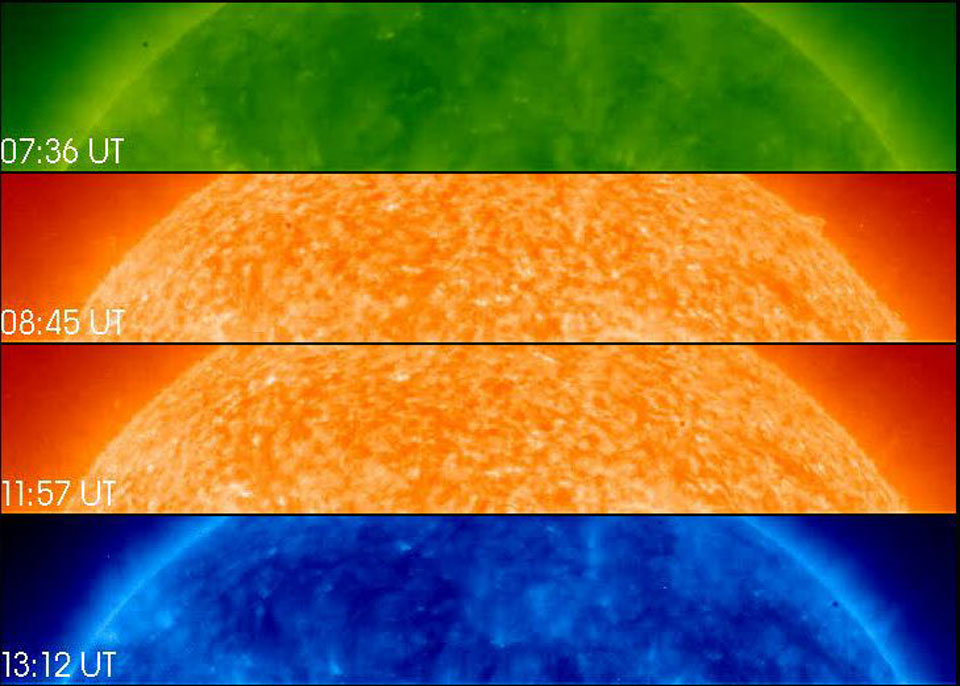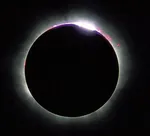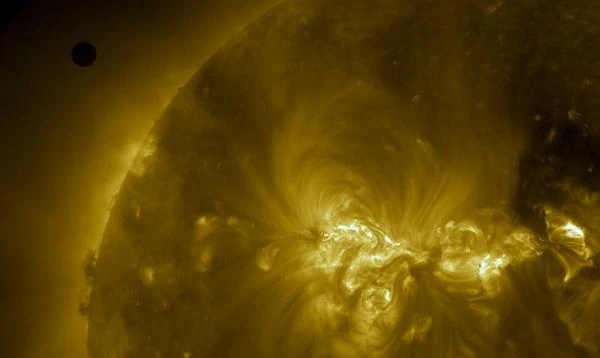Transit of Mercury
Mercury Transit May 2003
The Sun is really huge, he has captured 99.86% of the total mass of dust and gas of the original nebula.
You see the planet Mercury on the image above cons?
The tiny disk of Mercury, the planet nearest the sun, crossed the enormous solar disk, 7 May 2003 for 5 hours. Mercury has a diameter of 4 880 km and yet it is insignificant to the gigantic solar disk.
The sun was above the horizon throughout the transit of Mercury for observers from Europe, Africa, Asia and Australia and this has not posed a problem for the SOHO spacecraft watching the Sun.
Hardly visible under the aspect of a small dark spot, Mercury progresses from left to right on four camera images in EUV from SOHO.
The false colors of the images correspond to different wavelengths in the extreme ultraviolet.
On the enlarged image, try to see the small task revealing the presence of Mercury.
On the green zone, it is in the upper left, a little above the solar surface.
The first yellow zone, it is always on the same line, but in the first third of the image.
The second yellow zone, it is always on the same line, but in the last third of the image.
On the blue area, she is always on the same line, but at the limit of the curvature of the Sun.
This transit of Mercury is the first of 14 transits taking place during the twenty-first century.
Image: First transit of the century, of Mercury across the Sun. Image Credit: SOHO - EIT Consortium, NASA

Articles on the same theme
"The data available on this site may be used provided that the source is duly acknowledged."
 Lunar Eclipse, Celestial Concordance
Lunar Eclipse, Celestial Concordance
 Solar Eclipse: The Sun, the Moon, and the Shadow
Solar Eclipse: The Sun, the Moon, and the Shadow
 Baily's Beads: Fleeting Jewels of the Solar Eclipse
Baily's Beads: Fleeting Jewels of the Solar Eclipse
 The Moon Illusion
The Moon Illusion
 Eclipses explained by the plane of the orbit
Eclipses explained by the plane of the orbit
 Solar eclipse seen by satellite
Solar eclipse seen by satellite
 Transit of Venus on June 6, 2012
Transit of Venus on June 6, 2012
 Lunar Transit Phenomenon: A Small-Scale Eclipse?
Lunar Transit Phenomenon: A Small-Scale Eclipse?
 Impact theory at the origin of the Moon
Impact theory at the origin of the Moon
 Cycle of Saros and Exeligmos
Cycle of Saros and Exeligmos
 Superb annular eclipse of 2010
Superb annular eclipse of 2010